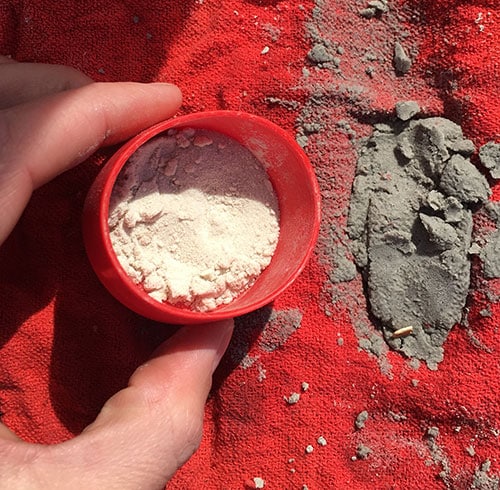Introduction to Frac Sand
Frac sand is a sand material that is round in shape and uniform in grain size. it is a strong material that can handle compressive forces up to several tons per sq inch. Frac sand is produced and used by the petroleum industry in hydraulic fracturing process to aid in the production of petroleum fluids such as natural gas and oil.
Demand for Frac Sand
In the past decade the demand for frac sand has increased as thousands of oil and natural gas wells are constructed and utilize the hydraulic fracturing process.
How is Frac Sand used?
During the drilling process, subsurface rock units such as organic shale can contain large amounts of natural gas, oil, or natural gas liquids that do not flow freely to a well. This is typically caused by one of two reasons: the rock units or pore spaces in the rock are so small that the fluids cannot flow through them, or the unit lacks permeability. Hydraulic fracturing solves these disruptions by generating fractures in the rock by drilling and sealing the portion of the well in the petroleum bearing zone which pushes water under high pleasure into that area of the well releasing the desired substance.
Consumer Choices and Frac Sand
Approximately 40% of sand mined in the US is used for applications other than proppant, including glass, construction, foundry. Sand used for nonproppant applications is generally of lower quality. Hydraulic fracturing generally requires sand of the highest quality.
Delivered sand cost at the well head is critical in E&P decision-making as logistics can account for +60% of delivered cost, therefore transportation distance is key. Sand from TX/Other sources is closer to most demand centers.
Sand quality, defined by crush strength, sphericity and uniformity, is a critical factor in the frac sand market. For example: white sand is the highest quality and mined primarily in WI, MN and IL. Brown and “other” sand is generally of lower quality and mined primarily in TX, AR, LA, AZ, MS, MO, and Canada. Coarse grades of sand are used more commonly in oil/liquids plays. Fine grades are used more commonly in gas plays. Some sand is not used after drying due to quality, mesh size, logistics or sales constraint; some of this sand is waste product.
Frac Sand Forecast
The North American frac sand demand is forecast to recover at 17% CAGR from 2016 to 2022. Most of the demand is concentrated in a few key plays: Eagle Ford, Permian and Appalachia to account for 68% of total frac sand demand in North America in 2017. Canada will account for 7% NAM frac sand demand in 2017.
- The Sand supply landscape is complicated; quality, delivered cost, and size/grade impact customer choices:
Sand producers with diversity have succeeded in the economic downturn, the more diversity in product mix, mesh size and customers have been a crucial factor. - +60% of cost pertains to transportation fees, this means transportation distance is key.
- Proppant companies are trying to avoid accounts receivable exposure to financially distressed pumpers. The current frac sand market is opaque: most contracts are long-term and bilateral however some contracts tied to oil prices are being renegotiated. The market demand is volatile; increasing sand per well offsetting some of the weakness due to reduced activity.

Coarse and fine frac sand.

Actual sand from a Dynacorp sand filter.

Fine frac sand in hand.
Frac Sand & EnerCorp
EnerCorp produces the industry’s most innovative, technically sophisticated and carefully designed sand filtration equipment. At EnerCorp, our range of configurations and sizes enables us to serve any production stream and commodity mix across North America. That includes the highest-pressure, highest-rate unconventional wells operating at up to 10,000 psi and 400°F.
EnerCorp's Technology Leadership Covers:
- The basic filtration concept;
- The careful engineering of our lineup of models to suit various production streams;
- The blowdown vessel that adds tremendously to sand capacity and reduces manual cleanout frequency; and
- Automation features that make filtration operation more convenient, reliable and safe.
EnerCorp's Innovations:
- Differential pressure sensors and switches
- Hydrate breaker
- Integration with producer’s scada system and flow control
Special Features/Functions:
- Automated sand-dump into blowdown vessel
- Automatic electronic call-outs notifying your operators when it is time for sand removal or filter cleaning
- Automated safety shut-downs when required, such as during pressure spikes or should the unit fill completely with sand
- Traditional timed cleanouts don’t work because of varying sand production
- Auto-call avoids screen clogging/collapse due to lack of maintenance
- Full automation through the addition of a smart PLC box to control the sand choke and incoming fluid and gas volumes
